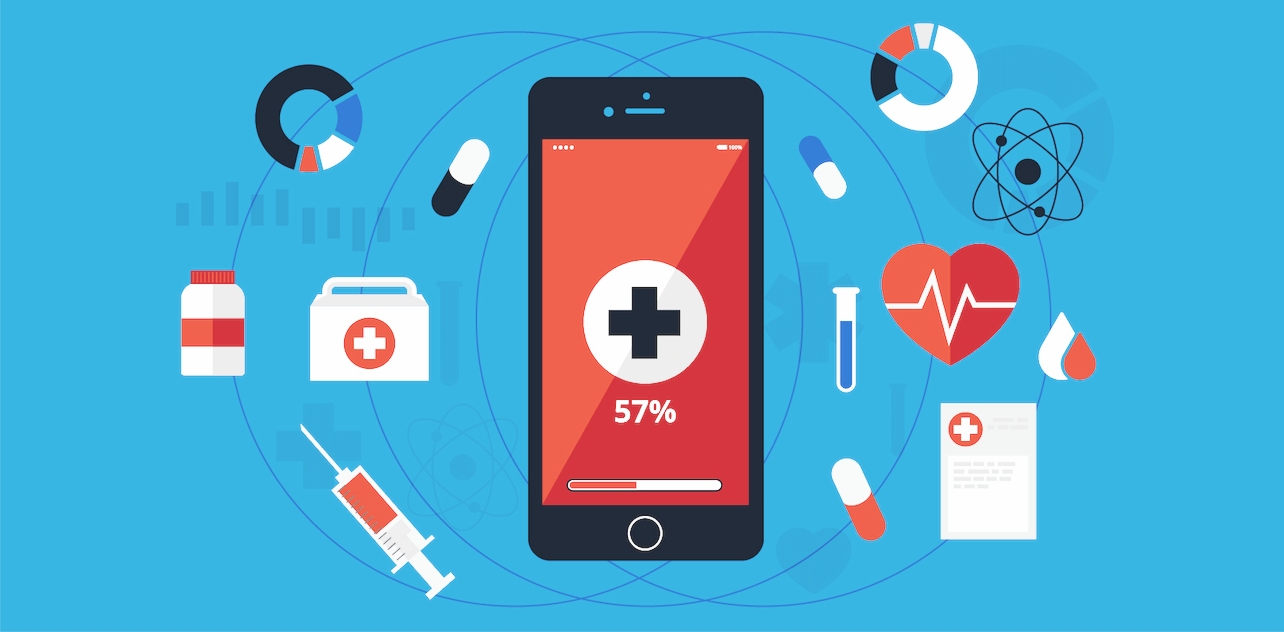While many care providers and clinicians have come to accept communication inefficiencies as a relatively normal occupational hazard, the monetary cost to the U.S. healthcare system is a truly staggering $12b. Worse, that number is only expected to increase with the adoption of the population health model of care and a growing number of physicians who are looking for new ways to stay connected and share messages, securely, across multiple locations.
To address woefully inadequate communications systems, healthcare providers have turned to solutions popular outside of the healthcare industry, such as SMS, messaging apps, and other real-time communication mediums. Downside: often, these solutions aren’t HIPAA compliant—making it important for healthcare providers to find the right balance between fast, convenient communication and secure communication.
Enter secure healthcare messaging.
Secure text messaging is an increasingly popular option for covered entities as it can provide instant communication between clinicians and other healthcare staff, without compromising data security. The value of texting between practitioners, using devices they already have on them, is a no-brainer.
Secure text messaging not only cuts down on call volume, but it saves time and makes communications regarding patient care much more efficient, because there are no callbacks, missed voicemails or misdirected messages.
With the right elements in place, secure messaging can help providers:
-
Promote care coordination between visits among various clinicians
-
Handle questions regarding routine health issues
-
Address clinical questions and concerns at the point of care
-
Monitor patient condition(s), and help the entire care team better understand best practices
While it can be convenient for handling routine non-clinical tasks such as medication refills and referrals, secure messaging is never as easy as it seems. It’s complicated by the fact that along with the increasing adoption of the population health model of care, providers today work in a myriad settings, and may or may not be equipped with the technology or processes to ensure they remain connected outside the four walls of a practice.
For most other industries, collaboration is as simple as sending an email or text, firing up a WebEx session, sharing a DropBox folder, or even using a collaborative app. In healthcare, however, HIPAA requirements mean that healthcare professionals can’t just shoot off a quick email or send a file over through the cloud without jeopardizing protected patient health information.
Potential HIPAA violations start with the lack of proper encryption, audit logging and smartphone security issues such as messages kept in-memory that can be read by whoever's using the phone. In one survey, about three in five respondents (61 percent) said HIPAA regulations pose an obstacle to communication and collaboration within the care team. In addition to complex schedules and communication preferences, clinicians also find themselves working within a mishmash of communication technologies, all the while worrying about these privacy and security challenges.
Addressing HIPAA Compliance Requirements
Healthcare providers who don't have their own secure, in-house Short Message Service (SMS) texting software have a grave HIPAA compliance problem on their hands, because nurses and physicians are likely already using the unsecure text-messaging apps that come with their personal smartphones, according to many CIOs and other senior health IT leaders.
The most tech-savvy physicians know that there are no HIPAA-compliant secure messaging services, only the means to help clinicians use communications technology in a HIPAA-compliant manner. The right solution will need to have the right blend of security and usability for clinical employees, but there are some specific qualities that are essential to staying within HIPAA’s boundaries:
-
Look for a vendor that supports the entire messaging process— web-based staff directory and on-call scheduling, secure texting, sending patient care system alerts to staff’s devices, and more.
-
Implement a fully integrated process that can operate smoothly, track messages, and help you take a giant step forward in delivering well-coordinated care for patients in a way that protects both patient information and your practice’s reputation.
-
Make it simple. The easier it is for staff to use a HIPAA-compliant messaging solution, the more likely they will be to adopt it.
Improving Patient Care
When you can enable a texting platform that will allow clinical texts, or patient information texts, that are secured, physicians can provide better patient care. Choosing a solution that pushes out critical alerts that improve patient safety and outcomes is icing on the cake. It’s important for providers to look for a secure messaging service that’s HIPAA-compliant, allows employees to receive messages even when out of the office and has an easy-to-use interface.
No matter the secure messaging technology chosen, make sure it offers the right blend of security and usability for your particular practice. How? Consider three specific elements essential to staying within HIPAA’s boundaries:
-
Look for technology that enables secure communications while eliminating inefficient steps across clinical workflows. The goal: Offer fast access to virtual desktops, and mobile and desktop communications solutions that also meet compliance and patient privacy requirements.
-
Focus on improved care coordination. The goal: Empower on-call physicians with secure and convenient access to critical patient information on their smartphones.
-
Implement a secure text messaging solution The goal: Help providers quickly – and safely – transmit information in a HIPAA- compliant way.
Today’s providers require convenient, easy-to-use communications solutions that also meet compliance and patient privacy requirements. By eliminating insecure provider-to-provider texting while still embracing the benefits of two-way communication solutions, it’s possible to improve communication and care coordination.


